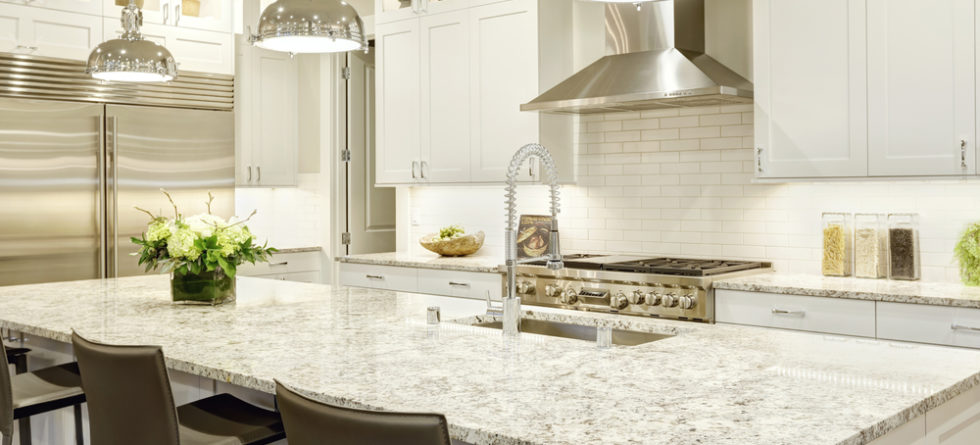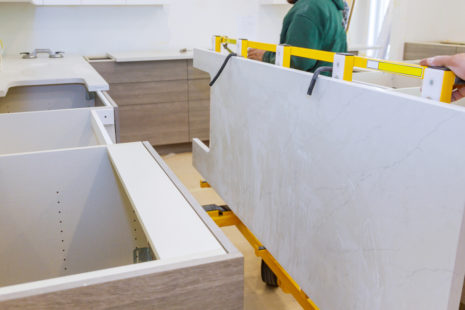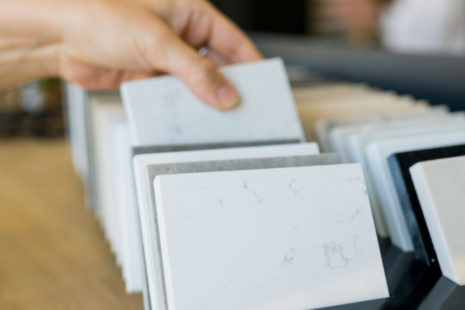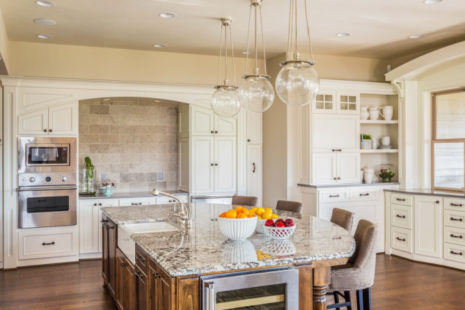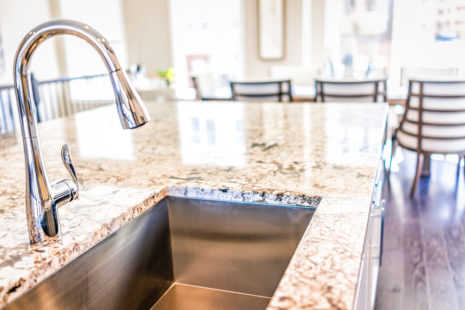In the heart of your kitchen, where culinary creativity meets daily functionality, few features face more demanding conditions than your countertops. From scorching pots fresh off the stove to the heat of appliances like slow cookers and air fryers, these surfaces must withstand thermal challenges that would damage lesser materials. Understanding the science behind heat resistance can help you select the perfect countertop that balances beauty with practical performance.
What Makes Countertops Heat Resistant?
Heat resistance in countertop materials isn’t a simple yes-or-no quality but exists on a spectrum determined by several key factors rooted in materials science.
The molecular composition of a material fundamentally determines its thermal properties. Materials with strong molecular bonds—particularly those formed under extreme heat and pressure—typically demonstrate superior heat resistance. This explains why natural stones and engineered materials mimicking their composition lead the pack in thermal performance.
Thermal conductivity—how efficiently a material transfers heat—plays a crucial role in how countertops respond to hot items. Materials with high thermal conductivity distribute heat quickly across their surface rather than concentrating it in one spot, reducing the risk of damage from localized thermal shock. Metals excel in this regard, while plastics and resins perform poorly.
The crystalline structure found in many natural stones provides exceptional thermal stability. These highly organized molecular arrangements resist breaking down under heat, maintaining their integrity even when subjected to temperatures that would deform or damage amorphous materials like resins and some composites.
Manufacturing processes significantly impact heat performance, particularly for engineered materials. The temperature at which composites are cured, the specific formulation of resins, and the ratio of natural to synthetic components all influence the final product’s thermal properties. High-quality quartz countertops cured at higher temperatures, for instance, generally outperform budget options in heat resistance.
Best Heat-Resistant Countertop Options
Granite remains the gold standard for heat resistance among commonly available countertop materials. Formed through volcanic activity at temperatures exceeding 2,000°F, granite can typically withstand direct contact with hot pots and pans (around 350-450°F) without damage. Its excellent thermal conductivity helps distribute heat quickly, preventing damage from concentrated hot spots.
Quartzite—not to be confused with manufactured quartz—offers possibly the best heat resistance of any countertop material commonly used in residential applications. This metamorphic rock forms when sandstone undergoes intense heat and pressure, creating an incredibly dense material capable of handling temperatures approaching 1,000°F without damage. For serious cooks, this natural stone provides unmatched peace of mind.
Soapstone delivers excellent heat resistance with distinctive aesthetic appeal. Its high talc content creates a dense, non-porous surface that absorbs and dissipates heat efficiently. Historical usage of soapstone for fireplace surrounds and wood stoves speaks to its exceptional thermal properties. While softer than some alternatives (and thus more prone to scratching), its heat performance remains outstanding.
Concrete countertops, when properly fabricated and sealed, provide remarkable heat tolerance. Modern concrete formulations reinforced with fibers and additives can withstand direct heat while offering unlimited design flexibility. Their thermal mass—the ability to absorb and hold heat—makes them particularly effective at maintaining stable temperatures in cooking areas.
Among engineered options, sintered surfaces (ultra-compact surfaces like Dekton and Neolith) lead the category in heat resistance. Created through a process mimicking the geological formation of natural stone but accelerated to extreme temperatures and pressures, these innovative materials can withstand direct flame without damage—something even natural stone cannot claim.
Common Mistakes to Avoid with Heat-Resistant Countertops
Even with heat-resistant materials, certain practices significantly increase the risk of damage. Perhaps the most common mistake involves thermal shock—subjecting countertops to sudden, extreme temperature changes. Even granite and quartzite can potentially crack when a surface area rapidly changes from cool to very hot or vice versa. This risk increases near seams, edges, and areas with natural fissures.
Many homeowners mistakenly believe that heat resistance applies equally across all examples of a given material. In reality, significant variation exists within material categories. Some granite varieties contain more heat-susceptible minerals than others. Engineered quartz products vary dramatically in heat performance based on their specific formulation and manufacturing process. Research the specific product rather than relying on general material categories.
The context of heat exposure matters tremendously. While many countertops resist brief contact with hot items, prolonged exposure to heat sources like slow cookers, electric skillets, or impromptu sous vide setups can cause cumulative damage. Heat dispersed through a thin pot bottom concentrates differently than heat from an appliance with a flat, wide contact surface that traps heat against the countertop.
Sealants and finishes often have lower heat tolerance than the materials they protect. A countertop that could theoretically withstand high heat might still sustain damage to its protective coating at much lower temperatures. This damage may not be immediately visible but can compromise stain resistance and accelerate deterioration over time.
How to Safeguard Countertops from Heat Damage
Despite having heat-resistant countertops, using trivets and hot pads remains the most reliable protection strategy. These simple tools eliminate direct contact between hot items and your countertop surface, preserving both the material itself and any applied sealants or finishes. Attractive trivet options in materials like silicone, cork, or decorative tile can become design features in their own right.
Strategic placement of heat-generating appliances warrants careful consideration. Positioning toaster ovens, coffee makers, and similar items on dedicated trivets or stands rather than directly on countertops prevents the cumulative effects of regular heat exposure. For frequently used heat-intensive appliances, consider creating dedicated zones with ultra-heat-resistant materials specifically chosen for this purpose.
In kitchens where serious cooking occurs regularly, integrating purpose-built landing zones for hot items provides both convenience and protection. Inset sections of soapstone or sintered surfaces adjacent to cooking areas offer safe places to rest hot pots without interrupting workflow. These practical design elements can become distinctive visual features that highlight your kitchen’s functional sophistication.
Regular maintenance plays a surprisingly important role in heat damage prevention. Well-sealed natural stone resists heat penetration more effectively than surfaces with worn or compromised sealants. For materials requiring periodic resealing, maintaining this protective layer according to manufacturer recommendations helps preserve thermal performance alongside stain resistance.
For homeowners undertaking kitchen renovations, the selection of heat-resistant countertops represents both a practical decision and an investment in long-term satisfaction. By understanding the science behind thermal properties and choosing materials that align with your cooking habits, you can create beautiful surfaces that maintain their appearance and functionality through years of culinary adventures.
When evaluating your options, consider not just how hot your kitchen gets today, but how your cooking style might evolve in the future. The most successful countertop choices anticipate changing needs while providing the confidence to experiment with new techniques without worrying about potential damage to your kitchen’s most visible surfaces
